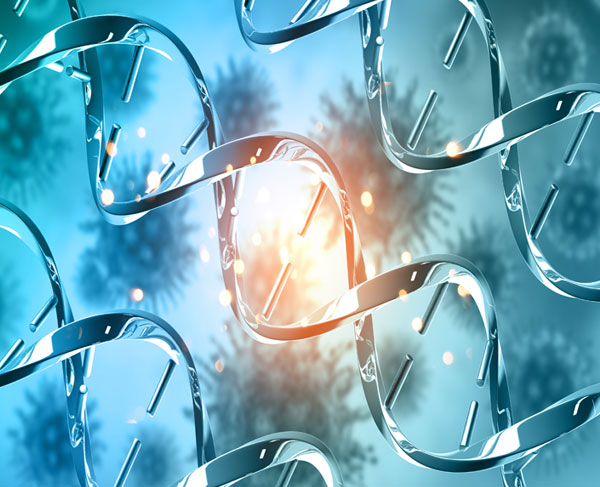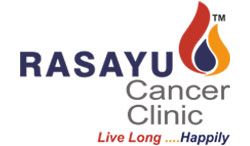Cancer Types
- Bladder Cancer
- Bone Cancer
- Breast Cancer
- Cervical Cancer
- Colorectal Cancer
- Endometrial Cancer
- Head & Neck Cancer
- Kidney Cancer
- Laryngeal Cancer
- Leukaemia
- Liver Cancer
- Lung Cancer
- Multiple Myeloma
- Nasopharyngeal Cancer
- Non-Hodgkin's Lymphoma
- Oesophagus Cancer
- Oral Cancer
- Ovarian Cancer
- Pancreatic Cancer
- Prostate Cancer
- Skin Cancer
- Stomach Cancer
- Testicular Cancer
- Thyroid Cancer
Opening Hours
- Monday - Saturday 10:00 am - 7.00 pm

Prostate Cancer
- Prostate cancer is a cancer in male prostate, a small walnut shaped gland that produces seminal fluid.
- There are different types of cells in prostate gland but mostly cancer develop in cells called Adenocarcinoma.
- Prostate Cancer is ranked 3rd as most common cancer type and it amounts to 7.1% of the total cancer patients per year.
- The 5-year survival rate for men with local or regional prostate cancer is nearly 100%.
- For men diagnosed with prostate cancer spread to other parts of the body, the 5-year survival rate is 31%.
- The 10-year survival rate for local, regional, and distant prostate cancer combined is 98%.
- Prostate cancer is uncommon in men under 50 years of age, the incidence increases in men over 60 years and peaks in men around 80 years of age.
- Epidemiological studies estimated that overall cancer rates are much lower in India than in western countries. U.S. Men get 23 times more prostate cancer than men in India.
Causes
- Age – Strongest risk factor. Present in 70% of men at 80 years age.
- Race – High incidence in N.Europe, N.America. Low in Indian than western countries.
- Genetic – 2 – 3 fold increase if first degree relative affected. About 10 % cases of cases can be occurred by the inheritance of autosomal dominant genes.
- Androgens – Rare in male castrated before puberty. Rare if deficient in5 α-reductase.
- Western Diet – High incidence if diet rich in fat and red meat consumption, low if rich in Vitaman A.
- Environmental – Industrial chemicals, cadmium and nuclear industry workers may be at increased risk.
- Vasectomy – A slight relative risk of developing prostate cancer has been reported but the link is unproven.
Specific Carcinogenic factors with sufficient evidence
- Studies could not establish any factors that could be directly attributed to prostate.
Specific carcinogenic factors with limited evidence
- Androgenic (anabolic) steroids.
- Arsenic and inorganic arsenic compounds.
- Cadmium and cadmium compounds.
- Firefighters, occupational exposure.
- Malathion.
- Night shift work.
- Consumption of Red meat.
- Rubber production industry.
- Thorium-232 and its decay products.
- X-radiation, gamma-radiation.
Signs and Symptoms
The presenting symptoms of Prostate cancer depend of extent of disease. Localized and invasive Prostate cancer symptoms are as follows :
- Local Disease
– Reduced void pressure.
– Hesitancy.
– Post micturition dribbling.
– Frequency increase.
– Urgency in urination.
– Nocturia. - Locally Invasive Disease
– Perineal Pain.
– Tenesmus.
– Impotence.
– Incontinence.
– Hematospermia.
– Loin pain.
– Anuria from ureteric - Metastatic Disease
– Bone pain.
– Sciatica/paraplegia.
– Pathological fracture.
– Lymphoedema. - Widespread Disease
– Anaemia.
– Uraemia.
– Weight Loss.
– Lethargy etc.
Investigations / Screening
- Physical Examination and History.
- Biopsy
The diagnosis of Prostate cancer is established by transurethral, rectal, or perineal biopsy. - PET scan/MRI/CT scan
MRI/ CT scan are used to look for any mass or abnormal structure, PET Scan is useful in detecting spread of cancer to any other organs in the body. - Investigations for Prostate Cancer
Digital Rectal examination (DRE) – DRE provides information on size of the prostate and detects changes as induration, firmness, nodules and extracapsular extension. The test is limited, as the accuracy of information is examiner dependent. - Prostate Specific Antigen
PSA is a glycoprotein and is secreted by prostatic cells. The normal serum value is between 0 and 4 ng/ml. PSA can be used in detection and staging of Prostate cancer and also used as a marker to monitor patients with cancer both before and after therapy. - Transrectal Ultrasound (TRUS)
A specially designed ultrasound probe is inserted into the rectum to image the prostate.The main use of TRUS is as guide for transrectal biopsy of the Prostate to determine the Gleason grade. - Bone scanning
Radio labelled bone scanning is a sensitive and specific method of detecting metastatic deposits.
Treatment
- To plan personalised treatment for each individual patient as every individual is different even if they have the same type of cancer.
- To improve health related quality of life (QOL) in all types and stages of cancer patients.
- To plan for partial or total regression of tumour depending on the nature of tumors.
- To increase overall survival (OS) of patients.
- To increase disease free survival (DFS) where complete resection of tumour is achieved.
- To provide a treatment option to patients who are refractory to conventional treatments like chemotherapy / radiotherapy / immunotherapy etc.
- To reduce the rate of growth of the tumor in recurrent and advanced staged cases.
- To increase progression free survival in advance cases.
- To reduce impact of symptoms related to progression of disease.
- To improve confidence of patients.
- To provide palliative support in end-of- life cancer cases.
- To add happiness and extension of life to cancer patients.
- To compliment other therapies like chemotherapy, radiotherapy in a synergistic way.
- To reduce severity or adverse effects of other conventional treatment. This reduces incidence and frequency of hospitalization.
- It is pertinent to note that Rasayu Cancer Clinic does not claim or blame anything while communicating any aspect to cancer patients.
- Rasayu Cancer Clinic focuses on Ayurveda fundamental based therapies.
- Rasayu Cancer Clinic believes in continuous improvement in service and science.
- Rasayu Cancer Clinic always advocates patient centric approach which leads to long and happy life of cancer patients.
- Every patient has a right to choose the therapy.
- Rasayu Cancer Clinic never imposes Rasayana therapy on patients but helps them to take the right decision, hence making patients/ relatives well aware about the disease and possible outcomes along with its risk benefit and cost benefit ratios.
- Rasayu Cancer Clinic is well connected with global updates in cancer care and therapies, through advisors and collaborations with national and international institutes.
Surgery
- Radical prostatectomy- It involves removal of the prostate and seminal vesicles, is associated with significant morbidity (incontinence, impotence) for patients with stage T1-T2 disease.
- Laparoscopic prostatectomy- This commonly used surgery procedure which is less invasive than a radical prostatectomy and may shorten recovery time. A small keyhole incision is made, a probe inserted and with the help of built in camera in the probe part of the enlarged prostrate is removed to clear the path of the urinary tract.
- Bilateral orchiectomy. Bilateral orchiectomy is the surgical removal of both testicles. It is described in detail in “Systemic treatments” below.
- Transurethral resection of the prostate (TURP). TURP is most often used to relieve symptoms of a urinary blockage, not to treat prostate cancer.
- Prostate Surgery Complications : What Patients Should Know – Click Here
Chemotherapy
- Chemotherapy is a cancer treatment that uses drugs to stop the growth of cancer cells, either by killing the cells or by stopping them from dividing.
- When chemotherapy is taken by mouth or injected into a vein or muscle, the drugs enter the bloodstream and can reach cancer cells throughout the body (systemic chemotherapy).
- When chemotherapy is placed directly into the cerebrospinal fluid, an organ, or a body cavity such as the abdomen, the drugs mainly affect cancer cells in those areas (regional chemotherapy).
- The way chemotherapy is given depends on the type and stage of the cancer being treated.
- Chemotherapy side effect in prostate cancer – Click Here
- Many of our Prostate cancer patient DO NOT suffer from majority of these side effects and living happily – Click Here
- Side effects of Chemotherapy – Click Here
- Adverse drug reactions (ADRs) of Chemotherapy – Click Here
Radiation Therapy
- In patents who would not be suitable for surgery but have good life expectancy and localized diseases should be considered for radiotherapy.
- Radiation therapy is the use of high-energy rays to destroy cancer cells.
- It may involve Brachytherapy or EBRT.
- Possible Side Effects of Radiation Treatment for Prostate Cancer – Click Here
Hormonal Therapy
- Patients with locally advanced and metastatic disease may be treated with hormonal therapy.
- Hormone Therapy Side Effects – Click Here
Rasayu Cancer Clinic Rasayan Treatment Protocol – To know more please click here
Rasayu Therapy is recommended for those :
- Who voluntarily opted for this treatment as their first choice.
- Who are disenchanted with the past treatments.
- Who do not see any other options of treatments.
- Who are looking for personalized treatment plan.
- Who desire a convenient home-based oral therapy which is easy to consume.
- Who are susceptible to acquire hospital borne infections/ complications, hence not willing to be hospitalised.
- Who are looking for favourable risk benefit ratio.
- Who desire to improve Quality Of Life benchmarks based on global standards and monitored regularly.
- Who are involved in decision making for choice of treatment.
- Who are willing to be involved in monitoring the efficacy of Rasayana Therapy.
- Who believe in the transparency of the process by conducting regular investigations by biochemical parameters/ hi tech imaging techniques like PET scan etc.
- Who are equally sensitive to the patient, the care givers and the family.
- Which can be taken with other treatments including Chemotherapy / Radiotherapy.
Disclaimer : This Website contains certain links such as You Tube links, research paper links / website links / audio visuals / internet information already available in public domain. The information contained in the audio visuals is meant for use by qualified Medical Professionals. The content of the links etc has been made available for informational and educational purposes only. Rasayu Cancer Clinic and its associates do not make any warranties with respect to the accuracy, applicability, fitness, or the completeness of the content of such links etc. The information contained in such links represents the views and opinions of the original creator of such links and are not views endorsed by the Rasayu fraternity.


